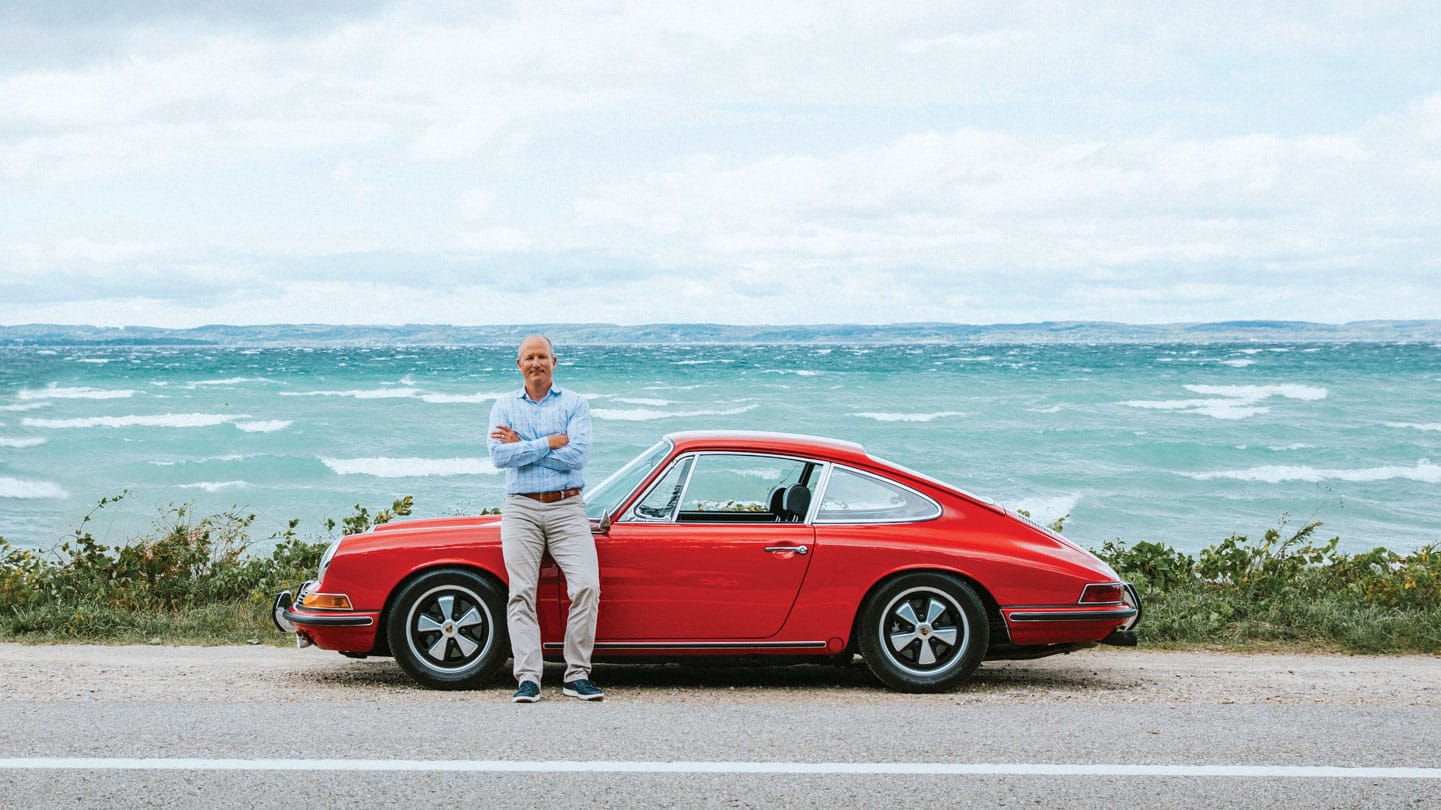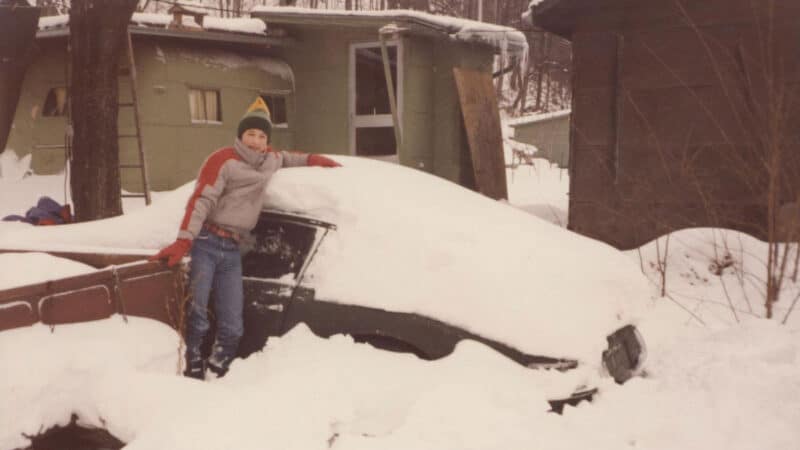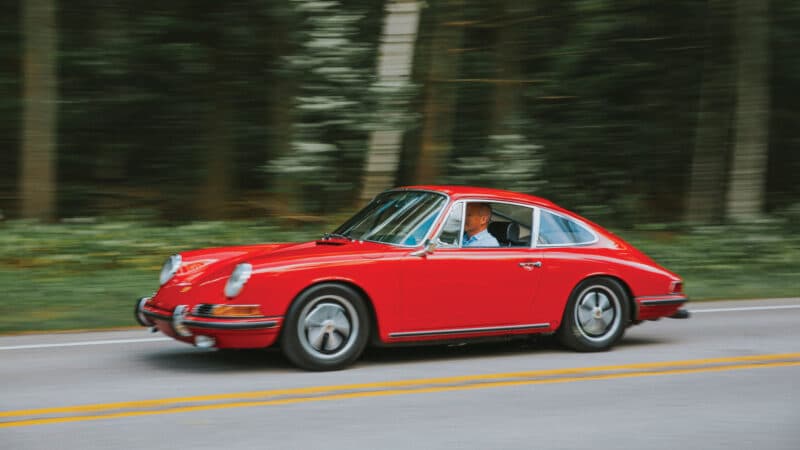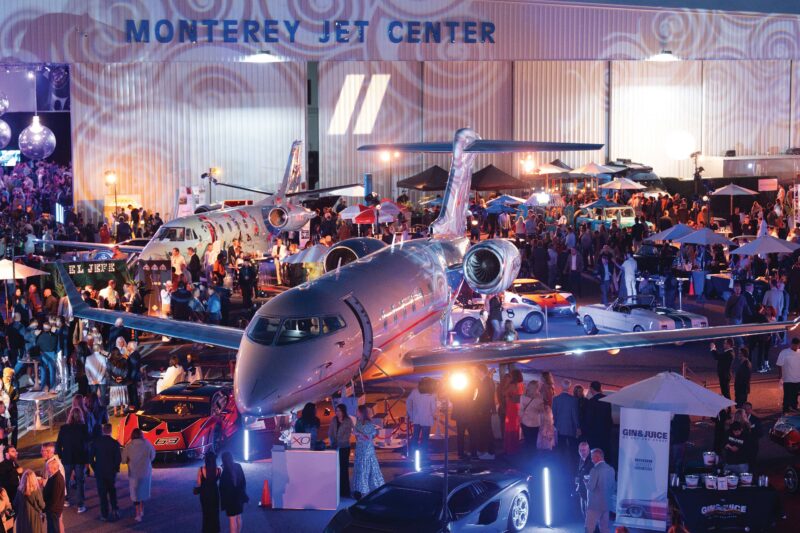Monterey car week: ‘I’ve seen some of the greatest preserved cars’
Hagerty chief McKeel Hagerty reveals why he can’t miss Monterey Car Week

Hagerty CEO McKeel Hagerty still owns the same Porsche 911 that he bought as a teenager
Hagerty/Michael Poehlman
Q&A
McKeel Hagerty is CEO of Hagerty, the “automotive enthusiast brand” that, as well as being the world’s largest provider of classic car insurance (two million clients and counting) also operates in the worlds of media, auto shows and auctions, the latter through its 2022 acquisition of Broad Arrow. Here, Hagerty tells us about his motoring journey and his love of Monterey Car Week.
Motor Sport: Do you remember when cars first sparked an emotion for you?
MH: Cars and mechanical things were in the ether in our household. My father, Frank, was in the insurance business [he founded Hagerty in 1984 as a specialist wooden boat insurer] and when he wasn’t working, he was either tinkering with boats and cars, making engines run or re-wiring the house – he could do anything. That’s the world in which my two sisters and I were raised.
What was your first car – and the story behind it?
MH: There was constantly a car or two being fixed up in the family garage, and it was practice for we children to buy one as teens and restore it in the years before we were old enough to drive. One of my sisters had a Chevrolet Corvair, the other a Porsche 356B – and, when I was 13, I bought a 1967 Porsche 911 S, which I paid for with lawn-mowing money. We had to dig it out of the snow on the owner’s drive. I restored it with my father’s help. I’m still grateful for that time engaging with him.

McKeel with dad Frank and the same 911 as above – albeit painted black
Hagerty family

“Yeah the car’s on the drive, kid”
Hagerty family
What happened to the car?
MH: We finished it in time for my 16th birthday in 1983, after which I began driving it and took it to college. I painted it black, because it seemed wrong to have a German car in any other colour – but in the early 2000s I had it professionally restored and returned to its original Polo Red. I still own it. It’s the first car I get out at the beginning of the season and it’s the last one to go to bed at the end of it. Recently, I used it for a couple of bucket-list drives – up the Pikes Peak hillclimb course and from Los Angeles to San Francisco on Highway 1, running along the Pacific coast.
What makes Monterey Car Week special for you?
MH: Partly its history and uniqueness – it has taken 75 years to grow from being just a concours to encompassing a diverse bunch of automotive events running over a 10-day period. It has become one of those American happenings that takes on global significance, like the Kentucky Derby, the Indy 500 or the US Open golf. I also love the very special combination of a concours competition, serious motor racing and a whole series of collector car auctions. All that combined with the dwindling number of big international auto shows, has made Monterey Car Week a major gathering point for the world’s top automotive executives and designers.

McKeel’s Porsche is back in its original colour – Polo Red
What aspect of Monterey Car Week is your personal favourite?
MH: Well, I always kick off with the Motorlux opening party [which Hagerty produces] and I love going to the events where cars can be seen in motion. I especially enjoy watching the races at Laguna Seca and the concours itself – well, it’s the best we have in the US. I now go as a spectator, but I was a judge for 23 years and I also participate by showing cars, such as my 1960 Aston Martin DB4 Series II and my Cadillac V16. It’s fun to get the cars ready, to get dressed up – and then to feel nervous while the judges make their inspections.
“It has become one of those happenings that takes on global significance”
Which type of concours car do you prefer – a 100-point restored example or a preservation class original?
MH: There’s a cultural difference between the US and Europe in that respect. Traditionally, American car events celebrated restoration – to us a barn find meant, “Great, now I get to restore it.” But 20 years ago people really started celebrating preservation and originality. To be honest, I like both. Judging preservation is about looking into a car’s history and its story, and I have been lucky enough to have seen some of the greatest preserved cars in existence, from the very first Lamborghini Miura dating from the mid-60s to a Ferrari 410 Superfast that a guy bought when he was a 13-year-old bus boy [US term: somebody who collects dishes and glasses in a restaurant]. Apparently it was owned by a mafioso guy and he allowed the bus boy to pay it off a tiny bit at a time and he kept it for life.

Motorlux mixes cars, aircraft and gourmet dining.
Of Hagerty’s two million clients, how many have ultra-valuable collections?
MH: Globally, there are probably thousands of collections worth $1m. But when you get to the $100m mark, the numbers reduce to dozens. Value can be a controversial subject, because the worth of a particular car can change and many people on our top list are of a certain age and bought their cars decades ago when the prices were a fraction of what they are now. The strange thing is, a $100m car collection is rare, but an art collection worth $100m is relatively commonplace.
